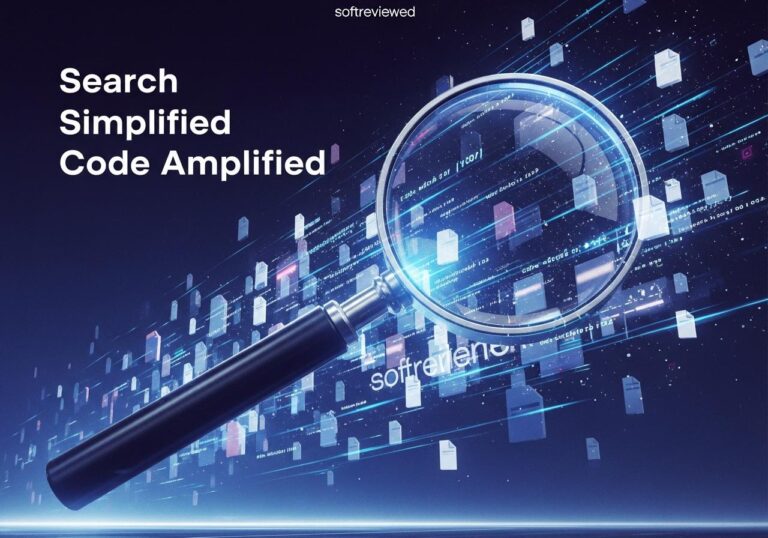OpenAI’s Open-Weight Revolution
The first open-weight model release since GPT-2 in 2020, bringing powerful AI to local applications
🚀 OpenAI’s Uncapped Potential
First open-weight release in four years with gpt-oss-20b (21B parameters, 16GB VRAM) and gpt-oss-120b (117B parameters, 80GB VRAM) designed for local AI applications without cloud dependencies.
⚙️ Lean, Mean, Reasoning Machines
MXFP4 Quantization dramatically reduces memory footprint for faster, lighter inference. Mixture-of-Experts (MoE) architecture intelligently activates only necessary model parts, optimizing efficiency without compromising performance.
⚡ Performance Power
Achieves impressive 256 tokens/sec on NVIDIA RTX 5090 GPUs, with optimized performance for popular tools like Ollama and llama.cpp, making advanced AI accessible to developers with consumer hardware.
🔓 Strategic Open-Source Play
Targets developers with Apache 2.0 licensing, responding to Chinese competitors like DeepSeek while keeping architecture and training methods proprietary. A calculated move in the AI ecosystem balance.
🧠 Reasoning Benchmark Focus
Competes against top models (Llama 3, Mixtral, DeepSeek) with exceptional performance in multi-step logic, coding, and complex problem-solving. Designed specifically for reasoning-intensive applications.
OpenAI’s gpt-oss-120b & gpt-oss-20b: The Long-Awaited Open-Weight Models & How They Stack Up Against the Competition
OpenAI has finally answered years of developer and community calls by releasing its long-awaited open-weight language models: gpt-oss-120b (large) and gpt-oss-20b (medium). These Apache 2.0-licensed models are among the most powerful reasoning and agentic AI systems available for free, commercially, and locally — and their arrival sets off direct competition with Meta’s Llama 3, Mistral’s Mixtral, Alibaba’s Qwen 3, DeepSeek R1, and more. But how do they actually perform versus big rivals? Let’s explore real benchmarks, capabilities, and what this means for you.
Meet the Models: gpt-oss-120b & gpt-oss-20b Explained
OpenAI’s new models are built for strong reasoning and tool use (like web search, function calling, and code execution).
- gpt-oss-120b: 117B parameters (5.1B active per token), matches or exceeds proprietary OpenAI o4-mini on key logic and math tasks.
- gpt-oss-20b: 21B parameters (3.6B active), competitive with o3-mini, runs on typical desktops/laptops.
Both are optimized for agentic workflows and can be deeply customized, supporting fine-tuning in any context, from business to research and creator tools.
👉 Available now on Hugging Face, OpenAI’s GitHub, and partners including NVIDIA and AWS.
Why Does This Matter? (Quick Context)
Until now, OpenAI’s powerful models were “cloud only” and closed-source. Meta, Mistral, and Alibaba gained massive developer adoption by open-sourcing Llama, Mixtral, and Qwen. Now, OpenAI brings near top-tier performance to the open-source world — with full weights, no royalties, and full customization rights.
Benchmarking: How gpt-oss-120b & 20b Compare to Top Open-Source Models
📊 Major Benchmark Scores
| Model | Reasoning (MMLU) | Math (AIME 2025, w/tools) | Science (GPQA Diamond) | Coding (Codeforces Elo) | Function Use (Tau-Bench) | Health (HealthBench) |
|---|---|---|---|---|---|---|
| gpt-oss-120b | 90% | 97.9% | 80.1% | 2622 | 67.8% | 57.6% |
| gpt-oss-20b | 85.3% | 98.7% | 71.5% | 2516 | 54.8% | 42.5% |
| Llama 3 70B | 82%-88% | 86%-89% | ~77-83% | 2470-2510 | ~61% | ~54% |
| Mixtral 8x7B | 82%-84% | ~85% | ~72-80% | 2410-2480 | ~62% | ~52% |
| Qwen 3 235B | 90-91% | 98%+ | ~80-86% | 2710+ | ~68% | ~55% |
| DeepSeek R1-0528 | 87% | 97.6% | 76.8% | 2560 | ~60% | ~53% |
| OpenAI o4-mini | 93% | 99.5% | 81.4% | 2719 | 65.6% | 50.1% |
📌 Note: Model performance can vary by benchmark, task, and fine-tune. Results aggregated from official cards, peer labs, and third-party reviewers.
🔍 Key Takeaways:
- gpt-oss-120b nearly matches or exceeds Llama 3-70B and Mixtral 8x7B on most logic, math, and coding benchmarks.
- Qwen 3-235B (Chinese flagship, Mixture-of-Experts) leads narrowly in many coding and multilingual tasks, but requires more resources.
- On Coding (Codeforces), gpt-oss-120b posts an Elo of 2622 (close to o4-mini’s 2719, and above Llama 3).
- For function calling (Tau-Bench) and health (HealthBench), gpt-oss-120b is highly competitive, even outscoring GPT-4o and some Meta models in specific contexts.
- Similar or better than proprietary OpenAI API models (o1, GPT-4o) on several key tasks—at zero API cost.
➡️ In-Depth Comparative Insights
- Reasoning & Chain-of-Thought: gpt-oss’s performance is on par with (and sometimes ahead of) larger Llama 3 and Mixtral models. Qwen 3 Thinking and Kimi K2 also catch up, but gpt-oss stands out for test-time adjustable reasoning “effort” levels.
- Coding: gpt-oss-120b's Codeforces Elo is among the highest for open models, often only outdone by Qwen 3-235B.
- Health: Outperforms all but the very largest, closed models in “realistic health conversations,” even beating GPT-4o and o4-mini in some HealthBench tasks.
- Security/Bio Risk: Internal and external evaluations confirm gpt-oss-120b does well, but does not break new risk ground beyond what’s already possible with DeepSeek R1, Qwen 3, and Kimi K2.
- Hallucinations: More likely to hallucinate factual answers than closed models like o4-mini; about 49%-53% hallucination rates on challenging datasets.
📈 Comparative Table: OpenAI vs. Top Open-Source LLMs
| Model | Parameters | Open License | Strengths | Typical Use Case | Notable Weaknesses |
|---|---|---|---|---|---|
| gpt-oss-120b | 117B | Apache 2.0 | Reasoning, math, agent tools, local | Offline, custom AI, chatbots | Hallucination rate, factual QA |
| Llama 3-70B | 70B | Custom (free) | Language, context, community | Large-scale apps/inference | Commercial restrictions |
| Mixtral 8x7B | 46.7B | Apache 2.0 | Efficiency, code, tool use | Lightweight agents, API bots | Slightly weaker at math |
| Qwen 3-235B | 235B/22B | Apache 2.0 | Coding, reasoning, multilingual | Multilingual, code, RAG | Compute heavy, very new |
| DeepSeek R1 | 528B/37B | Apache 2.0 | Efficiency, factual QA | RAG, scientific tasks | Still maturing (August 2025) |
Real-World Usage, Benefits & Drawbacks
✅ Benefits
- Runs locally. No data leaves your device—great for privacy, compliance.
- Full customization. Fine-tune for niche workflows, regional languages, or custom skills.
- Zero cost. Deploy on-premise or in cloud, with no API/royalty fees.
- Strong at complex reasoning, structured output, function calling, and using external tools.
⛔️ Drawbacks
- Hallucination risk. Prone to more factual errors than API-guarded models.
- Compute required. The 120b needs high-end consumer or datacenter GPUs.
- Safety controls. No OpenAI “killswitch”—developers must manage risks such as bias, toxicity.
⚖️ Expert Opinions
“OpenAI’s gpt-oss models are serious state-of-the-art for open weights—especially for reasoning and code, they rival (and sometimes surpass) closed and API models… one of the best options for high-performance, fully private inference.”
— Review, The Decoder
“Compared to Llama 3, Qwen 3, Mixtral, and DeepSeek, OpenAI’s open models offer enterprise-ready performance — with strong support for tool use, function calling and disciplined safety training. The competition now focuses on customization, not just raw quality.”
— Senior AI Researcher, TechCrunch
Creative Wrap-Up: Is OpenAI's Move a Turning Point for Open-Source AI?
OpenAI’s release of gpt-oss-120b and gpt-oss-20b sets a new standard—the long-awaited fusion of near top-tier logic, math, and agentic capabilities in a truly open, enterprise-friendly package. They finally close the gap with closed models (and, in some cases, jump ahead), especially for coding, reasoning, and running agent tools. If you need open licensing, local/private inference, and rich extensibility, these new models put OpenAI firmly back in the spotlight for developers, companies, and researchers everywhere.
Whether you’re building your own ChatGPT, developing niche enterprise apps, or exploring new agent workflows—OpenAI’s gpt-oss series gives you world-class tech, no strings attached.
➡️ Start building and experimenting by downloading the latest weights from Hugging Face or checking practical guides on OpenAI’s Cookbook.







